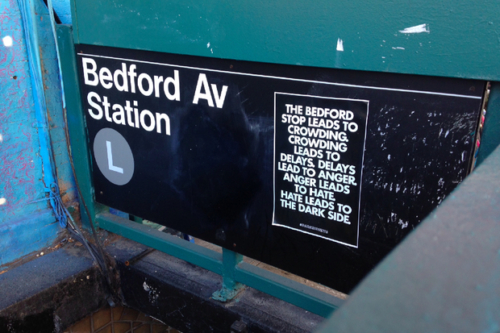The L-Train Shutdown That Wasn’t, Explained By New York’s Omnipotent Transit Blogger

Last week, Governor Cuomo rang in 2019 with a startling announcement that the widely-anticipated shutdown of the L Train, a plan three years in the making, will no longer be taking place. Rather, as Cuomo explained, a “new technology” from Europe will somewhat mystically repair the East River tunnels from the damage inflicted by Hurricane Sandy in 2012. The new fix, devised behind closed doors by engineers from Cornell and Columbia, won’t require a full shutdown. Instead, commuters will have acess to limited train service on nights and weekends. While this quasi-revival of the L Train is an exciting prospect at face, many New Yorkers remain skeptical. Cuomo’s sudden turn-around is still very much a question mark. To air out the confusion surrounding this reversal, and whether a full-shutdown still might be the best for New Yorkers in the long run is Benjamin Kabak, the brain behind transportation blog Second Avenue Sagas, the city’s unofficial authority on all things MTA.
———
What actually is going on, and how much will Cuomo’s decision will affect the day-to-day of L Train riders?
At a certain level, the announcement to halt the L train shutdown and to consider the other plan is not a bad one. It’s just that Cuomo didn’t do it particularly rigorously. It seems to have thrown a lot of people’s lives into disarray. Everybody was gearing up for about a year and three months of this shutdown, set to begin at the end of April, and now, nobody knows what’s happening. The MTA doesn’t even know what’s happening. We haven’t seen what I would call a fully-scoped plan with a rigorous engineering analysis. We don’t know what the work will entail, we don’t know when it will start. We don’t know what other alternatives will be required. There is, you could say, this element of disarray. Ultimately, it could be a beneficial move for the city, but right now, it’s raised more questions than it’s answered.
Do you know what this mysterious “new technology” is then? Does anyone?
The MTA thought it would need to replace a bunch of structures inside the L Train tunnel which house a lot of electrical and power supply cables. Those are bench walls. They also serve as walkways for emergency exits, so in the case that a train were to be stalled under the river, customers would be able to safely walk back to one end or the other without being on the track bed. At the same time, following [Hurricane] Sandy, when salt water flooded the tunnel, the MTA’s initial assessment indicated they felt they’d have to replace most of the concrete and traffic in the tunnel. That’s why they needed to do a full shutdown. They couldn’t do nights and weekends. There were some safety concerns. There were some environmental air quality concerns. And now, this new group came in, and said, “You don’t need to rebuild these duct walls. You can cover them in this high-strength plastic. You can put a platform above them for the exits. You can put all the cables inside the tunnel but not encase them so you don’t have to rebuild the structure.”
But, they haven’t answered questions regarding the track bed and the rest of the concrete. Today, one of the engineers said they felt they could do all the work that needed to be done concurrently without requiring anything more than the weekend shutdown. We haven’t really seen full-scope documents, and there are a lot of questions as to how this can be accomplished. Why it wasn’t considered before, and why the MTA had considered similar plans but decided not to go with them? What changed?
Should we chalk this up as politically-motivated decision by Cuomo? Is this his mess or the MTA’s?
Transit, on the whole, is a very conservative industry because of the safety elements involved. They go with what they know works because it’s been proven to work. The MTA is not particularly adept at bringing new ideas into practice. Then add in the bureaucratic inertia against any change at all. But, I do think that Cuomo has been very careless in the way he has introduced this plan to the public. I think a better approach would have been to say, “We’re going to put a pause on the L train shutdown. We think we have a better idea, but we need to fully scope it.” Instead, Cuomo held this major press conference, and then didn’t provide enough details about. Then, he got really defensive afterwards when people started questioning the thoroughness of it.
What does this new plan mean in terms of day-to-day impact for L Train riders?
I think the biggest adjustment will be the fact that L Train service will be significantly worse on weekends and at nights than what people are used to. Right now, the L Train between Brooklyn and Manhattan on weekends is nearly as crowded as it is during the week, and the MTA is saying that instead of running service every four to five minutes on the weekends, they’re gonna run a train every 20 minutes. That will just lead to slow commutes and very, very crowded trains. If there had been a full-time shutdown, the city was going to implement some very aggressive alternatives — bus lanes, more service on other lines. If there’s no full-time shutdown, the mitigation won’t be as robust, so we probably won’t see the same amount of buses. We’ll see some added service on nearby lines, but it won’t be to the same degree. I think the G Train and the M Train will probably improve, but the MTA has said at this point they’re not sure they’ll need the ferries and the buses. There will be fewer other options than would’ve been available under the full time shutdown. I think there’s a question here as to whether this will be sufficient, or whether it will cause people more inconvenience for longer.






